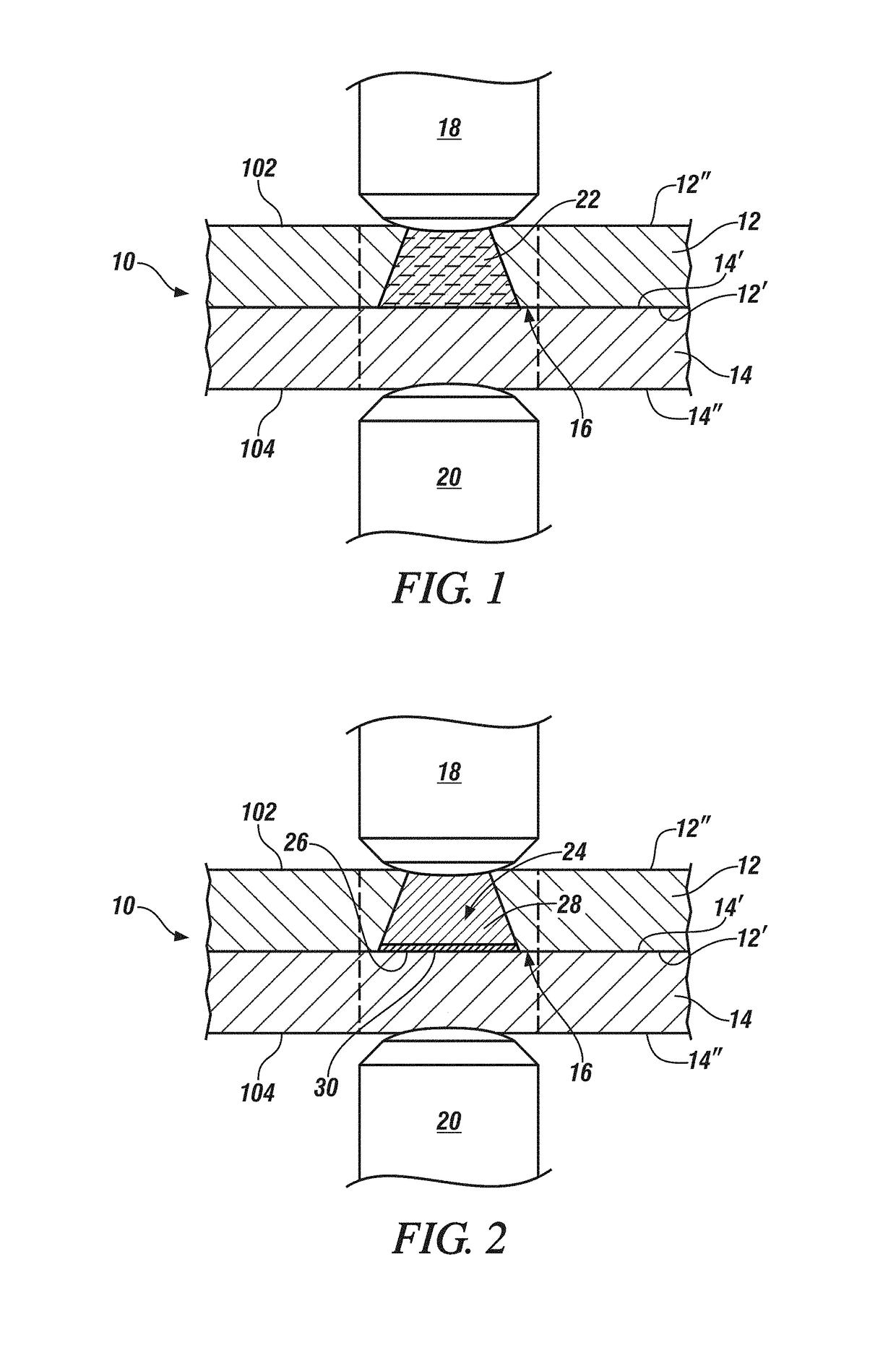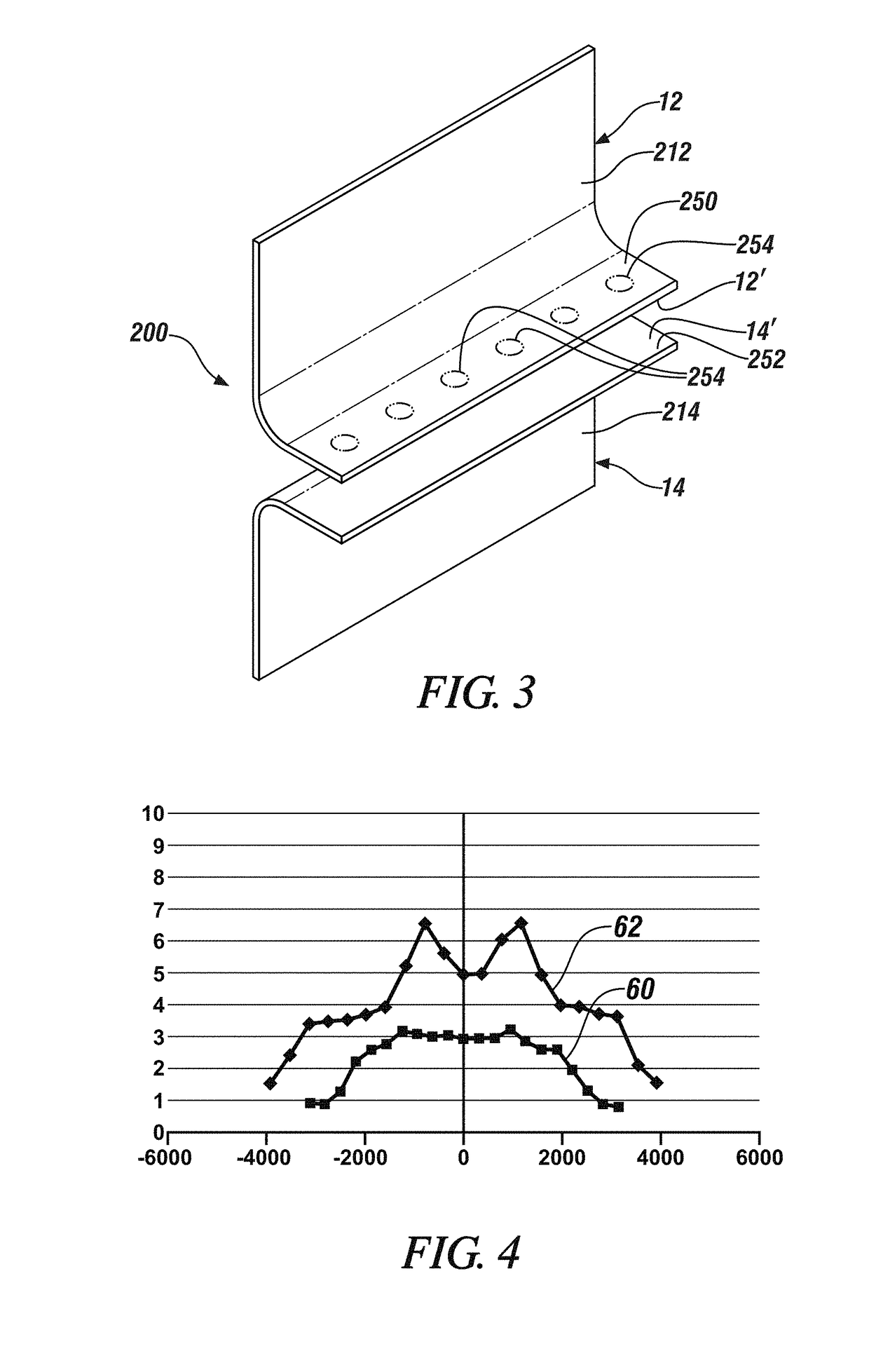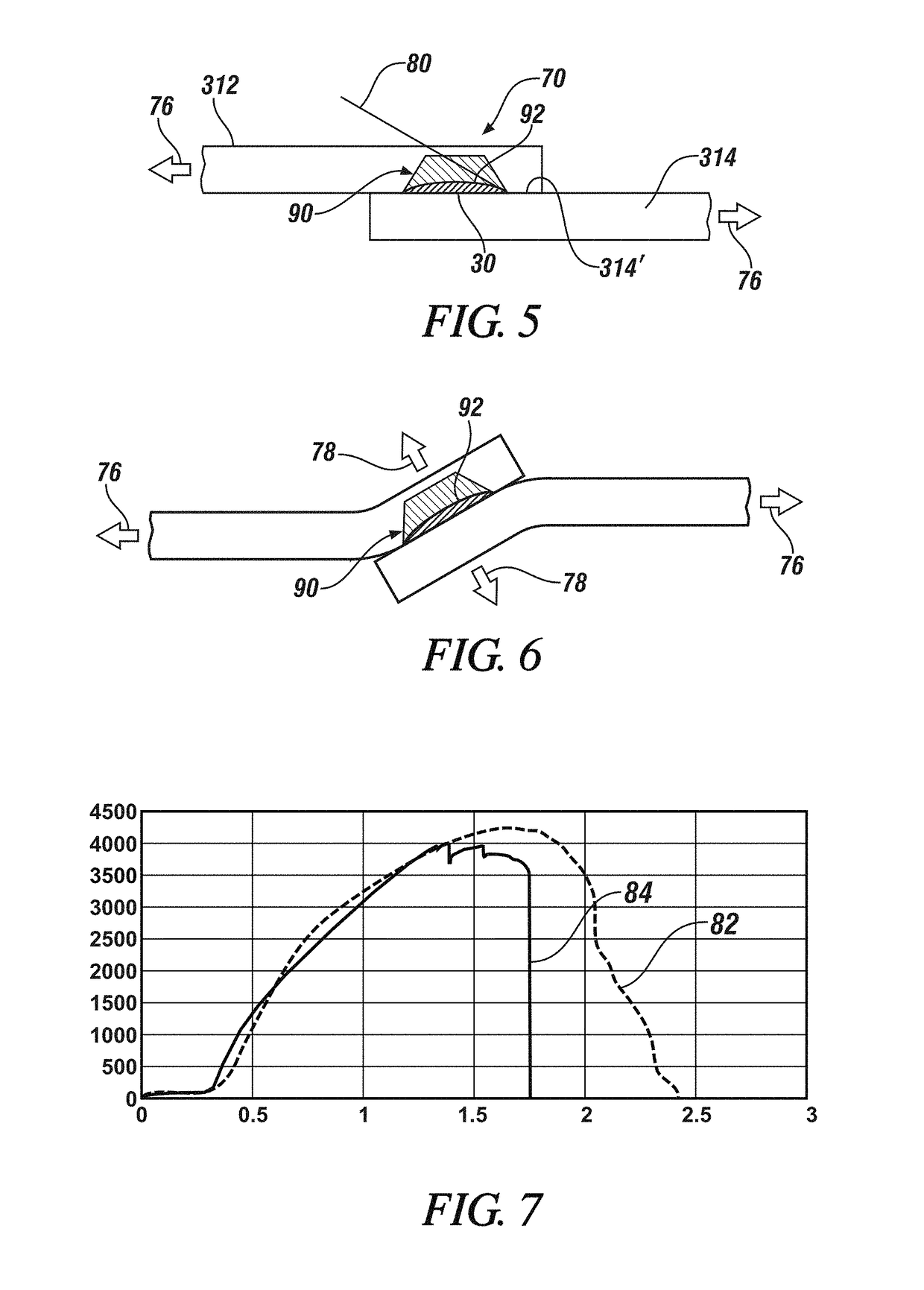Control of intermetallic compound growth in aluminum to steel resistance welding
a technology of resistance spot welding and aluminum workpiece, which is applied in the direction of welding equipment, manufacturing tools, transportation and packaging, etc., can solve the problems of complex ability to cultivate strong weld joints between aluminum workpieces and steel workpieces, and the use of resistance spot welding to joint together workpieces of dissimilar material families has seen less success, so as to achieve low thickness of intermetallic layer, high strength, and high strength
- Summary
- Abstract
- Description
- Claims
- Application Information
AI Technical Summary
Benefits of technology
Problems solved by technology
Method used
Image
Examples
Embodiment Construction
[0024]The present disclosure relates to methods of minimizing the growth rate of iron-aluminum intermetallic compounds when resistance spot welding together an aluminum workpiece and a steel workpiece. Reducing the growth rate of these intermetallic compounds reduces the thickness of the intermetallic layer in the weld joint and results in a weld joint with improved ductility and energy absorption. For instance, in accordance with practices of the present disclosure, the growth rate of Fe—Al intermetallic compounds may be effectively suppressed so that the intermetallic layer that develops within the weld joint adjacent to the steel workpiece has a thickness of 3μm or less, and in many instances 1μm or less, particularly at the perimeter of the weld joint where stresses from applied loads are greatest. The strength of the weld joint in both peel and cross-tension is also enhanced by minimizing the thickness of the intermetallic layer at the perimeter of the weld joint to such an ext...
PUM
| Property | Measurement | Unit |
|---|---|---|
| Tensile strength | aaaaa | aaaaa |
| Thickness | aaaaa | aaaaa |
| Flexibility | aaaaa | aaaaa |
Abstract
Description
Claims
Application Information
 Login to View More
Login to View More - R&D
- Intellectual Property
- Life Sciences
- Materials
- Tech Scout
- Unparalleled Data Quality
- Higher Quality Content
- 60% Fewer Hallucinations
Browse by: Latest US Patents, China's latest patents, Technical Efficacy Thesaurus, Application Domain, Technology Topic, Popular Technical Reports.
© 2025 PatSnap. All rights reserved.Legal|Privacy policy|Modern Slavery Act Transparency Statement|Sitemap|About US| Contact US: help@patsnap.com



